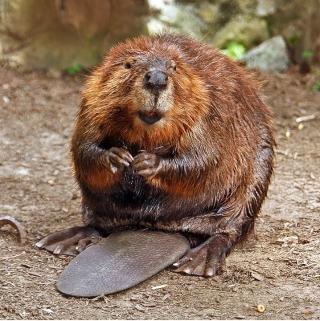Living with Beavers

“The Massachusetts Legislature amended G.L. c.131, s.80A, with the passage of “An Act Relative to Foothold Traps and Certain Other Devices.” This new law became effective on July 21, 2000, and makes it easier for applicants to alleviate threats caused by beaver and muskrat-related flooding.
Any person may apply to the Board of Health for an emergency permit to immediately alleviate a threat to human health and safety from beaver or muskrat-related activity. The law includes a list of activities, summarized here, that may constitute a threat to human health and safety.
- Beaver or muskrat occupancy of a public water supply (the Department of Environmental Protection (DEP) must make this determination);
- Beaver or muskrat-caused flooding of drinking water wells, well fields, pumping stations, sewage beds, septic systems, sewage pumping stations, public or private ways, driveways, railways, airport runways or taxi-ways, electrical, gas, communication, or other public utility structures or facilities;
- Beaver or muskrat-caused flooding affecting the public use of hospitals, emergency clinics, nursing homes, homes for the elderly, fire stations, hazardous waste, incineration, or resource recovery facilities, or other facilities where flooding may result in the release of hazardous or noxious materials;
- Damage (gnawing, chewing, entering or other damage) to electric or gas facilities, transmission or distribution equipment, cable, alarm systems, or facilities, caused by beavers or muskrat;
- Beaver or muskrat-caused flooding or structural instability on the applicant’s property, if it poses an imminent threat of substantial property damage or income loss of the following types: flooding of residential, commercial, or industrial facilities; flooding of or access to commercial agricultural lands which prevents normal agricultural practices from being conducted; reduction in the production of an agricultural crop caused by flooding or compromised structural stability of commercial agricultural lands; and flooding of residential lands in which the Board of Health, its chair or agent or the state or federal department of health has determined a threat to health and safety exists.
If the Board of Health determines that such a threat exists, the Board of Health shall immediately issue an emergency permit to alleviate the threat. The permit is valid for ten days. In some cases, the applicant may apply to the Board of Health for two additional ten-day permits. (See the new law for details). If denied, the applicant may appeal to the Massachusetts Department of Public Health (DPH) for a determination as to the existence of the threat. The Massachusetts DPH will be sending out written guidance to the municipal Boards of Health to help them implement the law.
The Board of Health permit authorizes the applicant to remedy the threat in one of three ways: 1) use of conibear or box or cage-type traps (subject to Massachusetts Division of Fisheries and Wildlife (DF&W) but not Conservation Commission regulation); 2) breaching of dams, dikes, bogs or berms, subject to determinations and conditions of Conservation Commissions; or 3) use of any nonlethal management or water-flow devices, subject to determinations and conditions of Conservation Commissions.
The applicant “in conjunction with the Board of Health” may apply to the DF&W for a 30-day extension permit. If the extension is granted, the DF&W shall develop, with the assistance of the applicant, the Board of Health, and the Conservation Commission, a plan to abate the beaver or muskrat problem using alternative, nonlethal management techniques in combination with water- flow devices, subject to Conservation Commission determinations and conditions. The plan may include box and cage type-traps, if necessary, subject to all applicable permitting requirements, including, but not limited to, any permits required by the DF&W.
Beaver and muskrat-related problems that are determined by the Board of Health to not constitute threats to public health and safety under this new law may still be addressed with assistance and approval from DF&W pursuant to regulations at 321 CMR 2.08. Any permits issued by DF&W that allow an alteration to a wetland resource area, for either long term management purposes or beaver related problems that do not constitute a threat to public health, are still subject to the determinations and conditions of the Conservation Commissions.
G.L c. 131, s. 80A and the Wetlands Protection Act.
The Legislature recognized that Conservation Commissions have always had an important role to play in solving beaver and muskrat problems, and it specifically emphasized that breaching and other water management proposals are subject to “determinations and conditions” of Conservation Commissions pursuant to the Wetlands Protection Act (G.L. c.131, s.40). Still, the Legislature placed responsibility for declaring a beaver or muskrat-related “threat to human health and safety” squarely with Boards of Health rather than with Commissions. Commissions, therefore, should not second-guess Boards of Health as to the existence of these threats. Commissions can, however, ask as many questions as necessary to ascertain the exact nature, scope, and magnitude of the threat, as well as the details of the proposed remedy, in order to impose conditions that will protect the interests of the Wetlands Protection Act. Commissions should work towards solutions that will alleviate immediate threats while protecting wetlands interests to the greatest extent possible. Close cooperation with applicants and Boards of Health will be essential in achieving this goal.
Resource areas likely to be altered by a dam breaching or water management proposal include banks, freshwater wetlands, land under water bodies, land subject to flooding, and riverfront areas. The interests served by these resource areas include: protection of public and private water supplies; protection of groundwater supplies; flood control; storm damage prevention; prevention of pollution; protection of fisheries; protection of wildlife habitat; and less likely, protection of land containing shellfish.”
| Attachment | Size |
|---|---|
| 174.32 KB |

